Uncover the top flower picks that attract the highly efficient leafcutter bees, and learn how to maximize your garden's pollination potential.
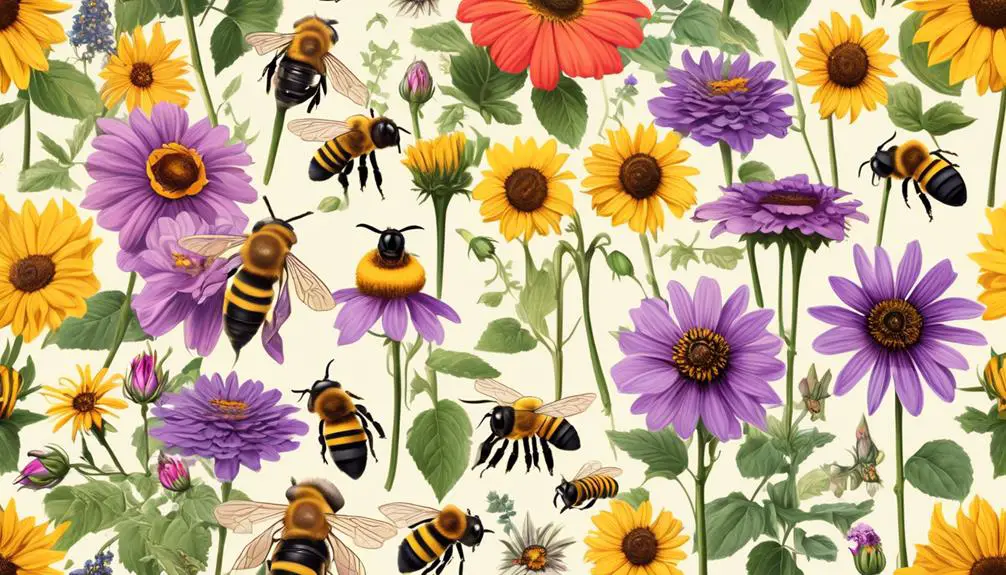
Best Flowers for Leafcutter Bees
You might not be aware, but leafcutter bees are among the most efficient pollinators, often surpassing honeybees in their ability to help our gardens grow. They're attracted to a specific selection of flowers, and knowing which ones to plant can make a significant difference in the success of your gardening efforts.
Of course, it's not simply about throwing some seeds into the ground and hoping for the best. There's a science to it, a delicate balance of factors that can make your garden an irresistible haven for these diligent workers.
So, what exactly are these leafcutter bee favorites, and how can you use this knowledge to enhance your gardening outcomes? Let's explore this fascinating topic together.
Key Takeaways
- Leafcutter bees are efficient pollinators and play a crucial role in garden growth.
- Flower selection directly influences leafcutter bees' ability to pollinate and the health of the local ecosystem.
- Top flowers for leafcutter bees include sunflowers, lavender, coneflowers, bee balm, and clover.
- To boost leafcutter bee populations, provide a range of native, nectar-rich flowers, create suitable habitats, avoid pesticides, and adopt organic gardening practices.
Understanding Leafcutter Bees
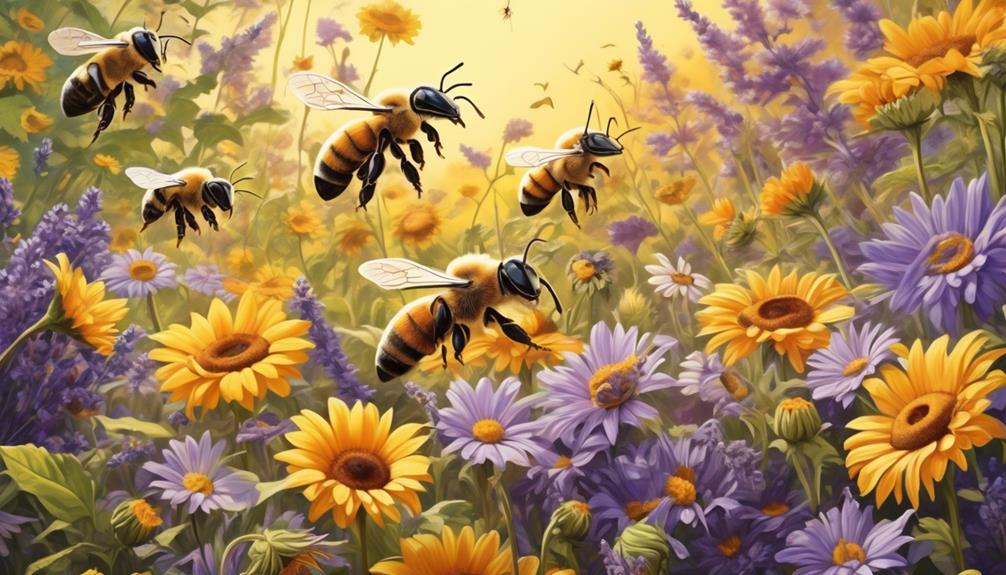
To fully appreciate the importance of flowers for leafcutter bees, you first need to understand the unique characteristics and behaviors of these fascinating insects. Leafcutter bees are solitary creatures, unlike their social honeybee counterparts. They're known for their distinctive behavior of cutting circular and oval pieces of leaves to construct their nests.
These bees have a particular affinity for legume plants. They'll snip away pieces of leaves, not for consumption, but to serve as a protective layer for their offspring. Inside these leafy cocoons, they lay their eggs along with a mixture of nectar and pollen as food for the larvae.
In terms of appearance, leafcutter bees are slightly smaller than honeybees, often mistaken for flies. They're usually dark in color with bands of white hair across their abdomen. These industrious insects also play a crucial role in pollination. As they move from flower to flower, they carry pollen on their hairy undersides, aiding in the fertilization and propagation of plants.
Understanding these aspects of leafcutter bees allows you to better appreciate their reliance on specific flowers for survival and reproduction.
The Importance of Flower Selection
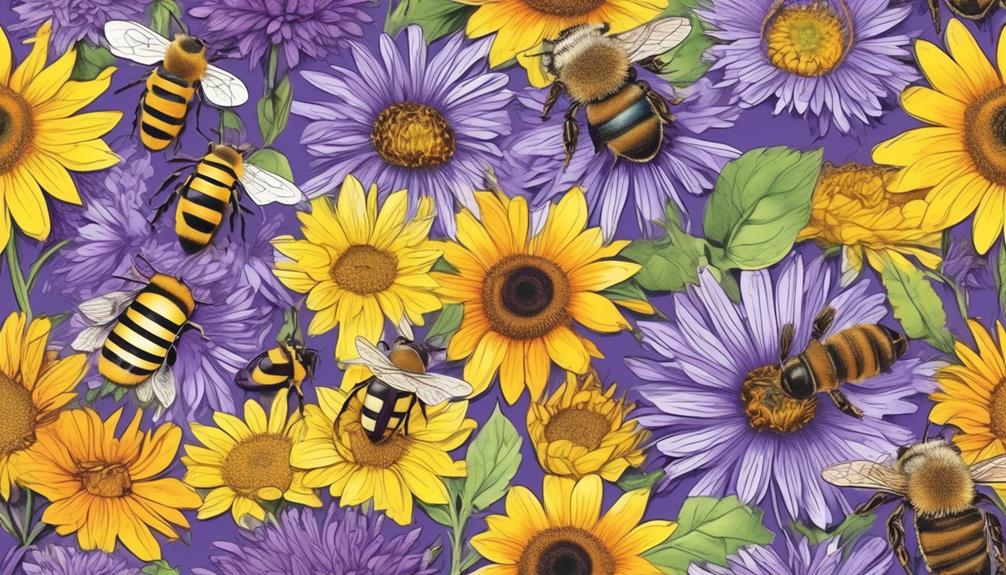
Choosing the right flowers for leafcutter bees isn't just about garden aesthetics; it's a critical factor in their survival and propagation. Leafcutter bees, unlike honeybees, don't produce honey or beeswax, but they're champion pollinators. Their flower selection directly influences their ability to pollinate and, consequently, the health of your local ecosystem.
Different flowers offer varying levels of nectar and pollen, the primary food sources for leafcutter bees. Your choice of flowers can significantly impact the bees' nutritional intake. High-value plants like cosmos, clovers, and dahlias provide ample nectar and pollen, ensuring the bees remain healthy and productive.
Moreover, leafcutter bees use certain plants' leaves to build their nests. They prefer soft, non-woody foliage like roses, green beans, and lilacs. If these aren't available, the bees might struggle to reproduce, affecting their population.
Top 5 Flowers for Leafcutter Bees
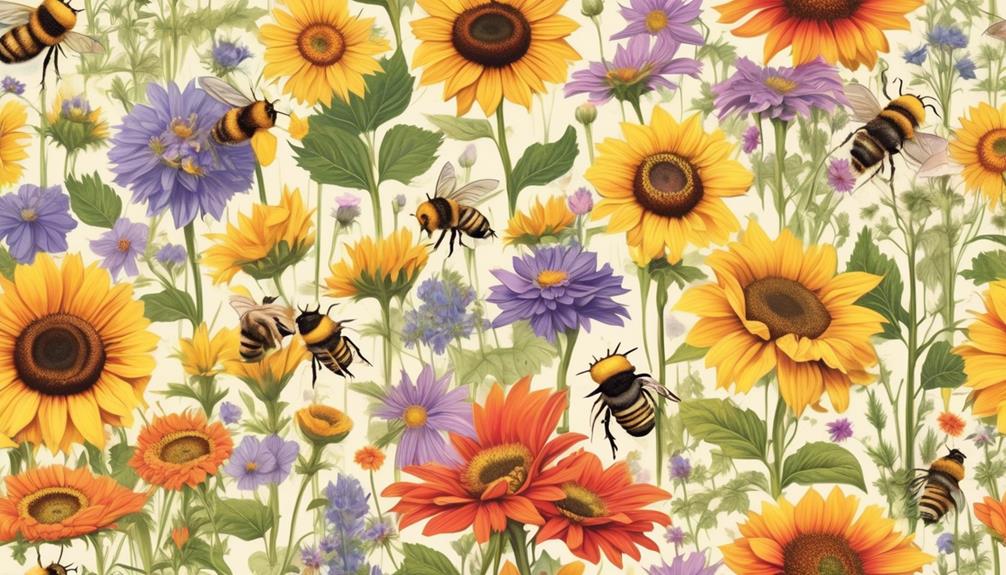
If you're looking to attract leafcutter bees to your garden, consider planting these top five flowers known for their high nectar and pollen content.
- Sunflowers: Leafcutter bees can't resist the rich nectar of these bright beauties. They're sun-loving, easy to grow, and provide a great pollen source. Plus, their sturdy petals provide ideal material for leafcutter bees' nests.
- Lavender: This perennial plant is a bee magnet. Its fragrant, purple flowers bloom generously and are full of nectar, serving as a reliable food source for leafcutter bees.
- Coneflowers: These native North American flowers are loved by leafcutters. They provide both nectar and pollen, and their blooms last from early summer until fall, ensuring a steady supply of food.
- Bee Balm: True to its name, this plant is a favorite among all types of bees. Its tubular flowers are filled with nectar, making it an excellent choice for attracting leafcutters.
- Clover: This hardy, low-maintenance plant is a leafcutter bee's delight. It blooms prolifically, providing ample amounts of nectar and pollen. Plus, its leaves serve as perfect material for nest construction.
Planting and Care Tips
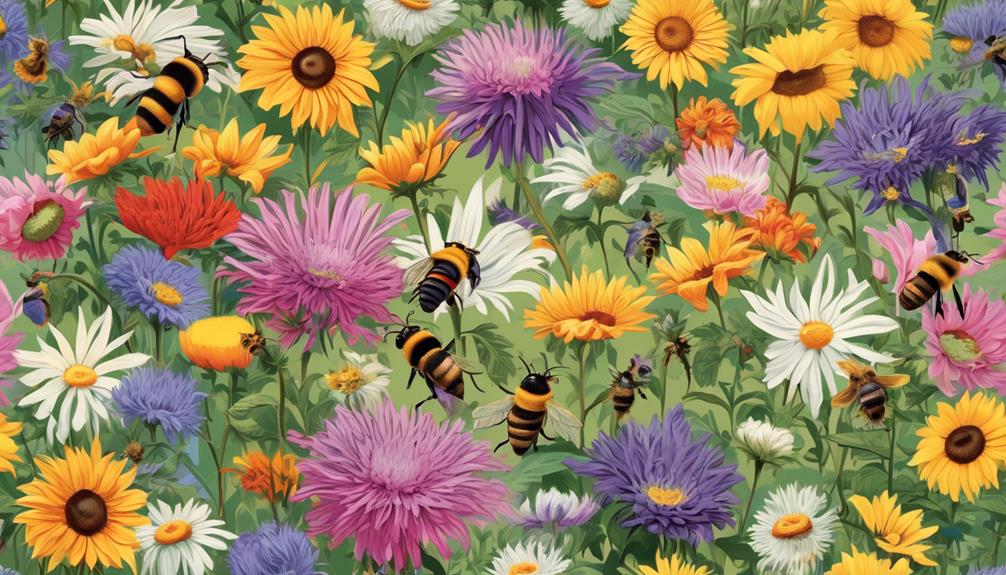
When planning your leafcutter bee-friendly garden, it's crucial to understand the specific planting and care requirements of each chosen flower. For instance, asters prefer full sun and well-drained soil, while lupines thrive in slightly acidic, sandy or gravelly soil.
To attract leafcutter bees, you'll want to avoid using pesticides, as these can harm the bees. Instead, opt for organic matter like compost to enrich the soil and promote healthy growth of your plants. Water your plants regularly, but make sure not to overwater, as this can lead to root rot. It's best to water in the morning so that the leaves can dry out during the day, preventing mold and other diseases.
Plant your flowers in clusters to create a more attractive destination for leafcutter bees. They're particularly drawn to large patches of the same flower. Also, consider incorporating native plants into your garden. These will be more likely to thrive in your local climate and soil conditions, and they're often more appealing to native bee species.
Lastly, remember that leafcutter bees need bare soil for nesting. Leave some spots in your garden undisturbed and uncovered to provide this habitat.
Boosting Bee Populations Successfully
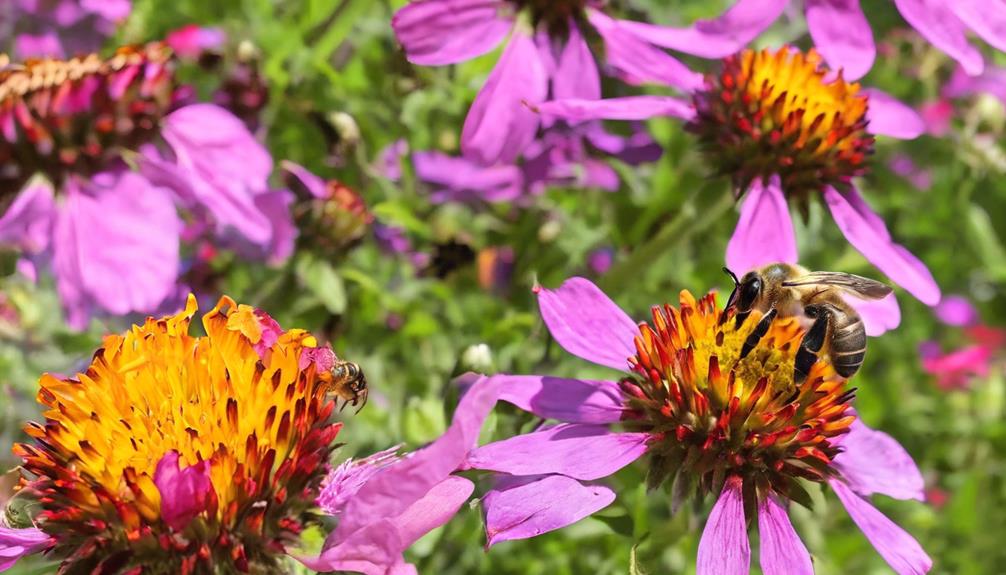
To successfully boost leafcutter bee populations in your garden, you'll need to understand and adopt certain strategies that promote their wellbeing and propagation.
It's important to provide a range of native, nectar-rich flowers that bloom at different times throughout the year. Leafcutter bees favor plants like the Aster, Penstemon, and Salvia species.
Creating a suitable habitat is another key aspect. Leafcutter bees build nests in small cavities and hollow stems, so consider leaving some plant debris in your garden. Alternatively, you can install a bee house filled with tubes of the right diameter for nesting.
Avoiding pesticides is crucial. These chemicals can harm bees or make the environment inhospitable. Instead, opt for organic gardening practices and encourage natural predators to control pests.
Proper hydration is also essential for bees, so ensure water is available. You can place a shallow dish with pebbles and water in your garden. The pebbles provide landing spots for the bees while they drink.
Conclusion
In conclusion, you play a crucial role in boosting leafcutter bee populations. By carefully selecting flowers such as sunflowers, wild roses, alfalfa, and clovers, you're providing these essential pollinators with the food and habitat they need.
Remember, successful planting and care of these blooms are just as important. With your help, we can ensure the survival and thriving of these incredible insects, vital to our planet's health.


